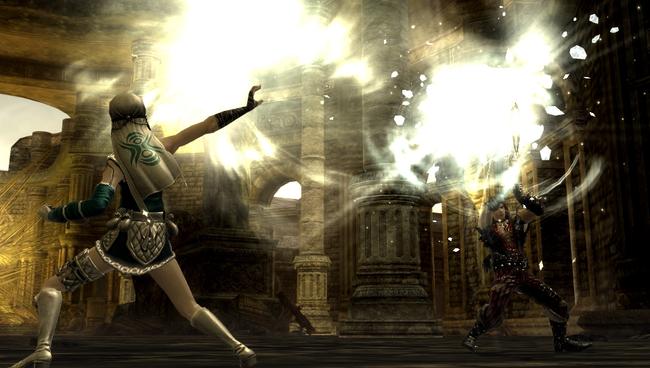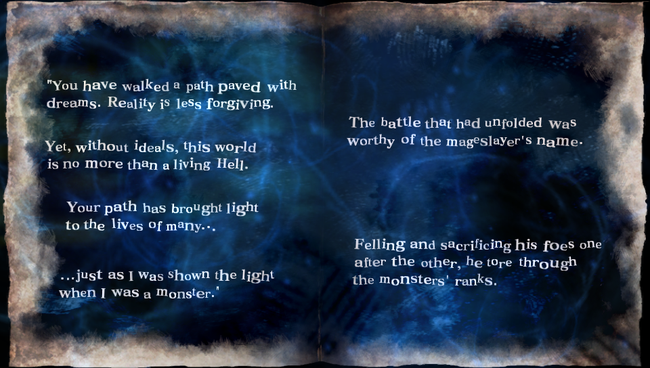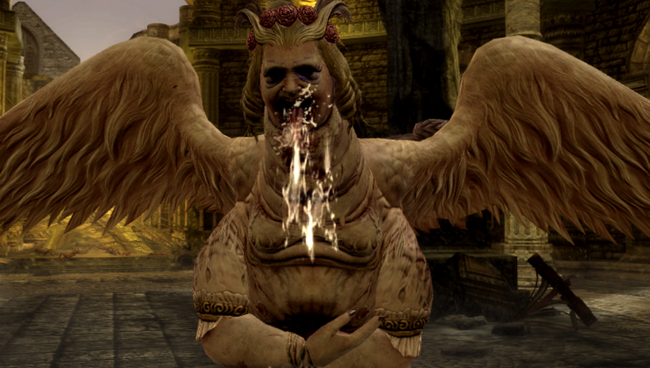
Soul Sacrifice was the best new Sony IP of the last generation, and it deserved better
I’ve never made it a secret that I hold the Vita in high regard. Not only did the system feature a slew of games from genres that I personally love, not the least to mention RPGs, but it was particularly a home for new Sony IPs. Some games like Gravity Rush and Tearaway eventually got representation on PlayStation 4, and many other games were multi-platform releases from the start, but others were left stranded on the little handheld that could. Sony’s Vita output was among some of the most creative games that the company put out last generation, and for many fans of Japan Studio – it was your last real chance to savor their output. There were some real gems in the Vita’s catalog, and it’d be a shame if some of them were forever lost to time.
Soul Sacrifice was one of those games, and it deserved far better.

One of the most defining aspects of last generation handhelds was the jump that Capcom made with Monster Hunter, from the PSP to the 3DS. Monster Hunter was one of the reasons that the PSP could compete so closely with the DS in Japan, and so with the absence of a mainline title on the Vita – many companies attempted to fill the void, not the least Sony themselves. Games like Toukiden, God Eater, and Ragnarok Odyssey all sought to closely mimic the gameplay loop of Monster Hunter. One could say, even to their own detriment.
When Sony threw their own hat into the ring, the titles they brought to the table were more than just Monster Hunter with a different skin and some dressings. While I never got deep into Freedom Wars, the neon sci-fi and dystopian-fueled aesthetic always stood out to me. Soul Sacrifice, on the other hand? That was entirely my jam. With what I could only describe as a grimmdark aesthetic, the monsters that players faced were all poor souls corrupted by their vices into caricatures of iconic creatures of European folklore and beyond. When Soul Sacrifice Delta launched, the comparisons to the brothers Grimm became even more apt, as many of the new monsters were lifted directly from their catalog of fairy tales.

There’s nothing else like it; the closest comparison I could make would be that the aesthetic reminds me of something of a mix between Alice and Dark Souls, though even that’s selling things a bit short. The game’s various battlefields all held an identity of their own – each of them striking in a unique way. Some of them were more grandiose than others, sure, but the game maintained a cohesive design language where all of these areas felt like part of the same world, even if taken individually they all held their own design language.
That’s not to say that the game didn’t come with its fair share of compromises. With a few exceptions, the game had no cutscenes. The way that the narrative unfolds is all handled through reading literal pages of the living book, Librom. Discovering the memories of sorcerer long lost, the relationships that he held and fostered throughout the ages with the game’s main antagonist Magusar and other sorcerers alike – it was all very striking. Much like the Thousand Years of Dreams from Lost Odyssey, these stories are more than simply words on a page. They’re accompanied with shifting text and colors, illustrations, and coupled with the haunting soundtrack in service of the narrative as a whole. Felled beasts are even offered their own short stories, detailing the events that lead to them becoming tempted by the Pale Chalice, warping their desires into a curse.

Soul Sacrifice isn’t a perfect game – far from it. There’s a reason that even fans won’t go too in-depth with the gameplay. It’s a bit of a janky affair – instead of a bespoke moveset, you equip “offerings” that you use as spells. Some are support spells, some are for attack – but all of them are incredibly simple to use. Delta improved upon it by allowing you to change the attributes of an offering depending on what else you had already equipped. If you had an extended dash buff activated, you could chain melee offerings from a dash into a new, unique move. Some offerings could now interact with the environment in a variety of ways, and of course – the expanded release came with a slew of new offerings on top of everything else.
What makes Soul Sacrifice’s apparent demise all the more heartbreaking are these very signs that the developers were learning from their mistakes, and improving an already great formula. Delta’s own additional narrative more than proved that the excellent world-building and narrative by Director and Scenario Writer Teruhiro Shimogawa was more than a fluke. Not that it should come at any real surprise, considering his previous work at Capcom on Ace Attorney Investigations 2.

It’s rare that a development team can succeed at crafting such an iconic new IP on the first go, even less so when they can go on to improve upon their work so succinctly a year later. It pains me that Sony didn’t fund the team to work on a sequel for PS4, but it’s not exactly surprising. Even if one had initially been greenlit internally, it’s clear that once Monster Hunter: World had been secured for a PS4 release, Sony would’ve been hesitant to continue developing the franchise. Even if in practice Soul Sacrifice was far more than another Monster Hunter knockoff – on paper, it was always meant to fill that void.
Comcept hasn’t developed anything of note since Soul Sacrifice Delta’s release in 2014, and Shimogawa himself left the company in 2020. Japan Studio’s ultimate fate, similarly, is well-known. As if by some ironic twist of fate, Marvelous’ own developers that helped work on the project have continued to work on Monster Hunter Stories 1 and 2 over the years, with at least some of the team working on God Eater 3 for Bandai Namco in 2018. For better or worse, the series’ death was likely decided not long after Delta’s release, or even potentially before it; we’ll probably never know for sure.
There’s not much room for hope of a sequel, or even a port down the line. It’s a shame, because a series like Soul Sacrifice shouldn’t have had to die with the Vita.